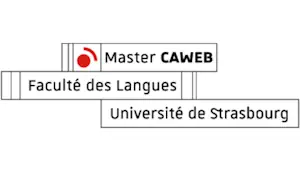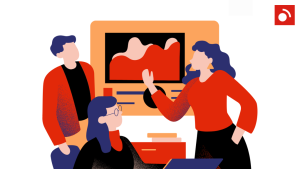Copyright and Images on the Web
While researching the sculptor Auguste Rodin as part of a university homework assignment, I started thinking about the legal implications of using images obtained from the Web. A few online searches allowed me to come to the conclusion that I was not risking anything; however, none of the blogs I consulted provided me with a satisfactory answer to my question regarding the legal implications of using content originating outside the borders of France.
Coming from Argentina, I consider myself a global citizen, and my questions concerned the use of images originating from countries other than the one I was residing in, or even countries that do not have clearly defined copyright laws. My research produced a handful of useful insights.

What is intellectual property (IP)?
According to the Berne Convention, which was created by the World Intellectual Property Association (WIPO), and signed by 174 of the world’s 195 countries , IP protects the following rights:
1. Fundamental principles
- A work shall be protected according to the national laws of signatory nations in which it is produced
- Protection does not require any additional administrative procedures, since copyright is automatic and enters into force with the creation of the work
- Protection is independent from whatever protection exists in the work’s country of origin. An image/photograph from a non-signatory nation is not an exception to the rule.
2. Economic Rights of Intellectual Property
The rights to:
- Translate
- Create adaptations
- Communicate on behalf of/represent in public
- Recite
- Broadcast
- Make reproductions
- Use a work as a starting point for another audiovisual work
3. Moral rights
According to the WIPO website, moral rights concern attribution, the right to oppose “any mutilation, distortion, or modification of the work or any other harm that would be prejudicial to the honor or reputation of the author”. This right is perpetual in France and throughout the world.
4. Duration of protection
In general, the work is protected until 50 years after the death of the author, unless it has been published anonymously or under a pseudonym. In this case, the work is protected until 50 years after its publication/creation. For cinematographic works, protection continues up until 50 years after the first public reproduction. Works of art and photographs are protected for 25 years after their creation.
Copyright: What are the exceptions?
We still need to discuss the so-called Free Uses, which are cases in which the use of a work is allowed without the author’s authorization, and without any legal repercussions. These cases are often linked to teaching and the use of information. An example would be the reproduction of a news story. Developing countries also benefit from certain exemptions concerning the translation rights of works.
Who regulates these standards internationally?
WIPO and TRIPS ( Agreement on Trade-Related Aspects of Intellectual Property Rights ) establish minimum standards to be respected in terms of international copyright legislation. From this minimum set of standards, each WIPO or WTO (TRIPS) member country can now offer protection for IP, knowing that its national laws will apply on its soil.
WIPO (189 member countries) is an autonomous agency which belongs to the UN. It is a global forum dedicated to working on services, practices, and cooperation around intellectual property. In addition to providing advice, WIPO provides the public with an alternative dispute resolution platform in relation to intellectual property. It is an interesting alternative to going to court, which often involves costs and penalties. The organization remains committed to the Berne Convention for the Protection of Literary and Artistic Works.
What is the role of TRIPS in all of this?
The World Trade Organization (WTO) is a negotiating body that provides governments with a space to reach agreements on trade treaties and help on the resolution of conflicts. The WTO does this to facilitate and increase international trade. TRIPS is an agreement that falls within the framework of this organization and is broadly aligned with the standards proposed by the Berne Convention.
Why reproduce the same standards in two different international bodies?
TRIPS places copyright in the context of international trade standards and imposes compliance on WTO members. Copyright thus gains weight in an organization that also manages other aspects of economic exchange. TRIPS adds and clarifies certain points omitted by the convention as proposed by WIPO.
For example:
- Copyright protects the expression and original manifestation of ideas but not the ideas themselves. These belong to the public domain.
- Criteria for protecting computer programs are identical to the criteria for protecting literary works.
- Databases must be protected even if the information they contain is not protected by copyright, because the selection and organization of the information is considered to be an intellectual creation.
It should be noted, however, that TRIPS does not take into account the moral rights of the author. Copyright does not prevail in certain geographical areas. This is based on the fact that in a digital era, exchanges have no borders: someone in France can easily publish a post using a photo taken by a Chilean photographer.
How does it work in France?
France is a signatory to WIPO and TRIPS but also has its own legislation. In France (and in Europe as well) all intellectual works are protected for a period of 70 years after the author’s death (images included), unless the work has been signed anonymously or with a pseudonymous name. In this case, the work will be protected for 70 years from publication/creation.
The moral of the story
There is no room for manoeuvrings under the law. The use of images to present an artist in an academic context does not represent a great risk. But, if you earn money with someone else’s work, or if you prevent them from earning money themselves, you are in trouble. Many sites offer royalty-free images. Google Images searches with a right-of-use filtering option can be very useful, just like Creative Commons, with its own search engine for royalty-free content. At the moment, GIFs are freely usable, and this will always be the case if there is no economic interest to defend.
Sources
WIPO, World Intellectual Property Organization
Animated GIFs and fair use : what is and isn’t legal, according to copyright law, Forbes
Article written by Mercedes Elustondo, CAWEB Master’s.
Other articles
-

Discover our online Master in digital communication
-

Taking your international marketing campaign to local markets: interview with transcreation specialist Claudia Benetello
-

Google Pixel Buds: Dreaming of a World Where Language Barriers no Longer Exist
-

What is evergreen content and why is it important for your website?
-

Personalized User Experience: The Future of UX Design
